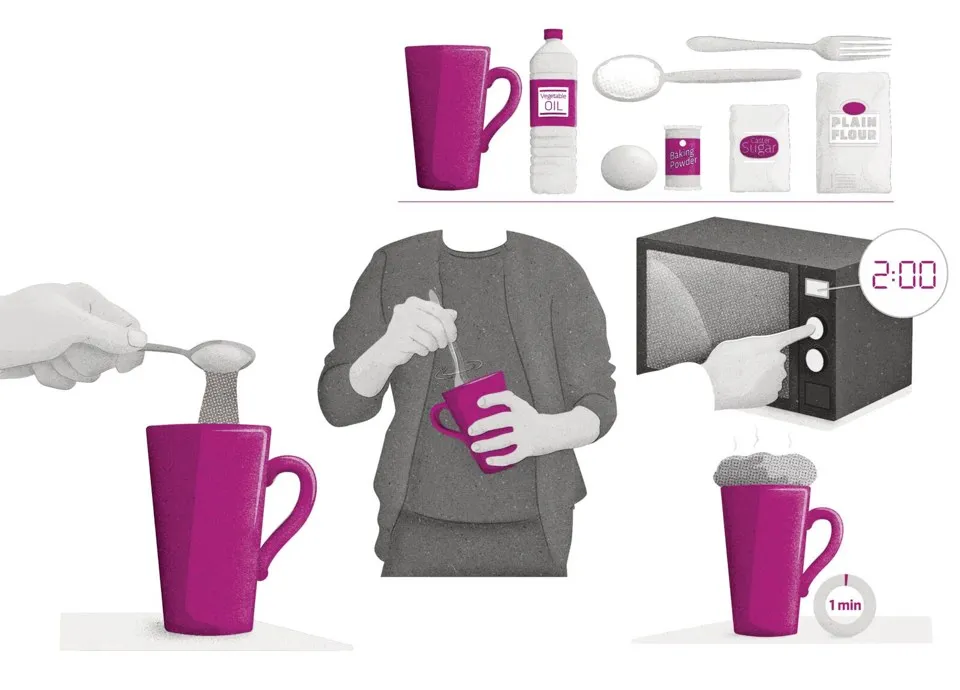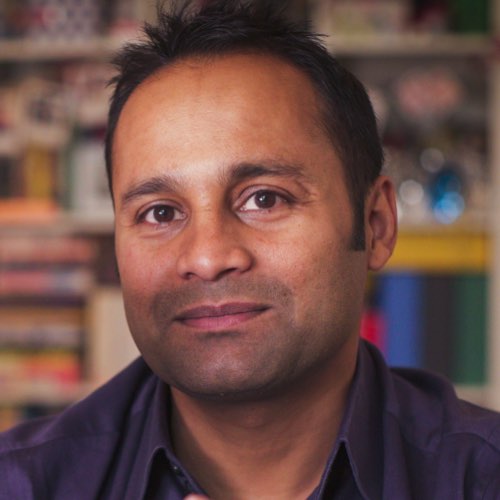What you'll need
- A microwave oven
- A large mug (must hold at least 375ml of liquid. A tall thin one is better than a wide short one, so that the cake mixture doesn’t spill out when it rises)
- 4 level tablespoons plain white flour (40g)
- 2 level tablespoons caster or granulated sugar (25g)
- 1/2 teaspoon baking powder (2g)
- 1 small egg
- 2 tablespoons vegetable oil (30ml)
- 2 tablespoons water (30ml)
- A fork
- Optional: 2 tablespoons of chocolate chips/blueberries/chopped
This experiment involves a microwave and results in an extremely hot cake, so make sure young children are supervised by an adult.
What to do
- Pour the flour, sugar and baking powder into the mug and mix well.
- Add the whole egg, oil, and water and beat with the fork until you have a smooth batter.
- Add chocolate chips, berries or dried fruit as desired and mix well into batter.
- Place mug in microwave and cook on full power for two minutes.
- Remove mug from microwave and allow to cool for a minute or so.
- Eat cake!

What's the science
Your cake is the result of several chemical reactions and physical changes driven by energy provided by the microwave oven.
The main body of the cake comes from the flour and water. Mixing these two ingredients together causes some of the proteins in the flour to form an elastic network of proteins called gluten. Heat causes the rubbery gluten to coagulate into a strong structure.
When the cake batter is heated, an alkali (sodium bicarbonate) and an acid (usually cream of tartar) in the baking powder react to produce bubbles of carbon dioxide, which cause the cake to rise.
Meanwhile, the egg in the batter coats the bubbles and hardens around them, resulting in the holes in the cake that give it a spongy texture.
The oil coats all of the ingredients and prevents the cake from drying out.
Of course, a cake would be nothing without its sweetness. The sugar provides this, and any chocolate or fruit you add creates an extra dimension of flavour and texture.
